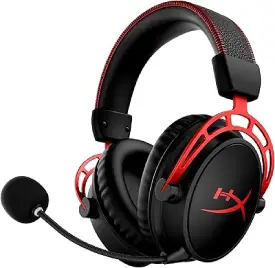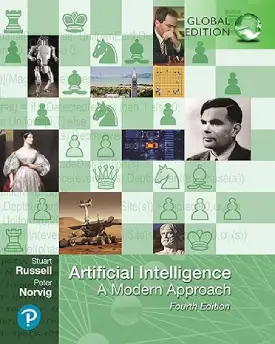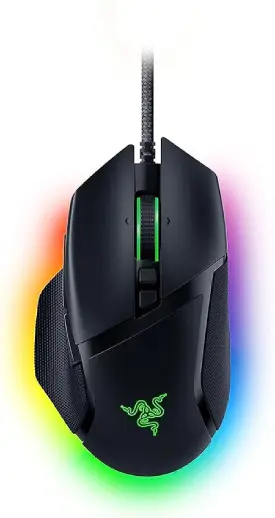CPU, GPU, and NPU: What is the Difference Between the Three
In this content, we explore the differences between CPU, GPU, and NPU.
Table of Contents:
In a Nutshell
This is a quick look at the difference between CPU (Central Processing Unit), GPU (Graphics Processing Unit), and NPU (Neural Processing Unit). For a more comprehensive information, please refer below.
- CPU (Central Processing Unit) is a general-purpose processor, optimised for sequential serial processing.
- GPU (Graphics Processing Unit) is a specialised processor, able to handle multiple tasks simultaneously.
- NPU (Neural Processing Unit) is a dedicated processor for accelerating neural network computations.
CPU vs GPU vs NPU
In computing, there are three primary types of processors that stand out for their unique roles and capabilities: Central Processing Units (CPUs), Graphics Processing Units (GPUs), and Neural Processing Units (NPUs). Each of these processors offers specific tasks in mind, and as such, making them essential components in modern computing systems. Within this article, we delve into the fundamental differences between CPUs, GPUs, and NPUs. We explore their architectures, use cases, and how they complement each other in today’s technological landscape.
CPU (Central Processing Unit)

Role and Purpose
The CPU, often referred to as the “brain” of the computer, is a general-purpose processor. It can handle a wide variety of tasks, from running operating systems and office applications to managing web browsing and other general computing needs. The versatility of CPUs makes them indispensable in virtually all computing devices, from desktops and laptops to servers and mobile devices.
Architecture
CPUs typically consist of a few powerful cores optimised for sequential serial processing. The design of these cores offers the execution of a wide range of instructions quickly and efficiently, making them adept at handling complex calculations and diverse operations. Modern CPUs, such as Intel’s Core i7 or AMD’s Ryzen 9, often feature multi-core architectures, enabling them to perform multiple tasks concurrently, albeit with a primary focus on serial processing.
Use Cases
CPUs are best for tasks that require sequential processing and complex decision-making. They excel in running operating systems, executing general-purpose applications, and handling tasks that require high single-thread performance. From word processing and spreadsheets to managing databases and performing software development, CPUs remain the cornerstone of general computing.
GPU (Graphics Processing Unit)

Role and Purpose
Initially designed to accelerate the rendering of images and videos, GPUs have evolved into powerful processors for parallel processing. Their ability to handle multiple tasks simultaneously makes them ideal for applications that require massive parallelism, such as scientific simulations, data analysis, and machine learning.
Architecture
GPUs are characterised by thousands of smaller, more efficient cores designed for parallel processing. Unlike CPUs, which focus on sequential processing, GPUs’ optimisation allows for the performance of many operations concurrently. This architecture enables GPUs to process large blocks of data simultaneously, making them exceptionally well-suited for tasks that can be parallelised. Notable examples of GPUs include NVIDIA’s GeForce RTX 3080 and AMD’s Radeon RX 6800.
Use Cases
While GPUs were originally created for rendering graphics and videos, their parallel processing capabilities have been harnessed for a variety of other applications. In scientific computing, GPUs accelerate simulations and data analysis by processing large datasets in parallel. In artificial intelligence (AI), GPUs apply in the training machine learning models, where their ability to handle numerous computations simultaneously significantly speeds up the process. Additionally, GPUs are crucial in gaming, providing the computational power needed for rendering high-resolution graphics in real-time.
NPU (Neural Processing Unit)

Role and Purpose
NPUs, also known as AI accelerators or neural engines, are special processors that can accelerate neural network computations. As AI and machine learning applications become more prevalent, the need for dedicated hardware to efficiently handle these tasks has led to the development of NPUs.
Architecture
NPUs are built to optimise the performance of deep learning algorithms. They feature specialised units for handling tensor operations, matrix multiplications, and other tasks common in neural network training and inference. This specialisation allows NPUs to perform AI-related computations more efficiently than general-purpose processors. Examples of NPUs include Google’s TPU (Tensor Processing Unit), Apple’s Neural Engine, and Huawei’s Ascend NPUs.
Use Cases
NPUs’ primarily usage is in AI and machine learning applications. They integrate well into smartphones, AI accelerators, and IoT devices to enhance AI-related tasks such as image and speech recognition, natural language processing, and autonomous systems. In mobile devices, NPUs enable real-time AI processing, improving functionalities like facial recognition, voice assistants, and augmented reality applications. In data centers, NPUs accelerate the training and deployment of large-scale AI models, driving advancements in fields like healthcare, finance, and autonomous driving.
Key Differences and Integration
Purpose and Specialization
The CPU is a versatile processor, capable of handling a wide range of tasks. Its few powerful cores are optimised for sequential processing, making it ideal for general-purpose computing. On the other hand, the GPU excels in parallel processing, with thousands of smaller cores designed to handle multiple tasks simultaneously. This makes it perfect for tasks that can be parallelised, such as graphics rendering, scientific simulations, and machine learning. And finally, the NPU is highly specialised for AI and neural network tasks. Its architecture optimisation is best for tensor operations and matrix multiplications, providing the highest efficiency for AI-related computations.
Performance Characteristics
CPUs offer high single-thread performance and versatility, but lower throughput for parallel tasks compared to GPUs and NPUs. On the other hand, GPUs provide high throughput for parallel tasks, enabling fast processing of large datasets and complex simulations. However, it is less efficient for sequential tasks. Whereas, NPUs deliver the highest efficiency for AI tasks, significantly accelerating neural network training and inference. NPUs are less versatile than CPUs and GPUs, being highly specialised for specific AI workloads.
Integration in Modern Systems
In modern computing systems, these processors often work together to leverage their respective strengths. CPUs manage general-purpose tasks and orchestrate overall system operations. GPUs handle parallelizable workloads, such as rendering graphics and processing large datasets. NPUs accelerate AI tasks, providing the computational power needed for real-time AI applications and advanced machine learning models.
For instance, in a smartphone, the CPU manages the operating system and general applications, the GPU handles graphics rendering for games and videos, and the NPU accelerates AI functions like facial recognition and voice assistants. In data centers, CPUs oversee system management, GPUs process large-scale data analysis and simulations, and NPUs drive AI research and deployment.
The Bottom Line
The distinct roles of CPUs, GPUs, and NPUs highlight the importance of specialised processors in modern computing. While CPUs remain the backbone of general-purpose computing, GPUs and NPUs provide the necessary acceleration for parallel processing and AI tasks, respectively. Understanding the differences between these processors allows for better optimisation and utilisation of their capabilities, driving advancements across various fields and applications. As technology continues to evolve, the collaboration between CPUs, GPUs, and NPUs will undoubtedly play a crucial role in shaping the future of computing.





